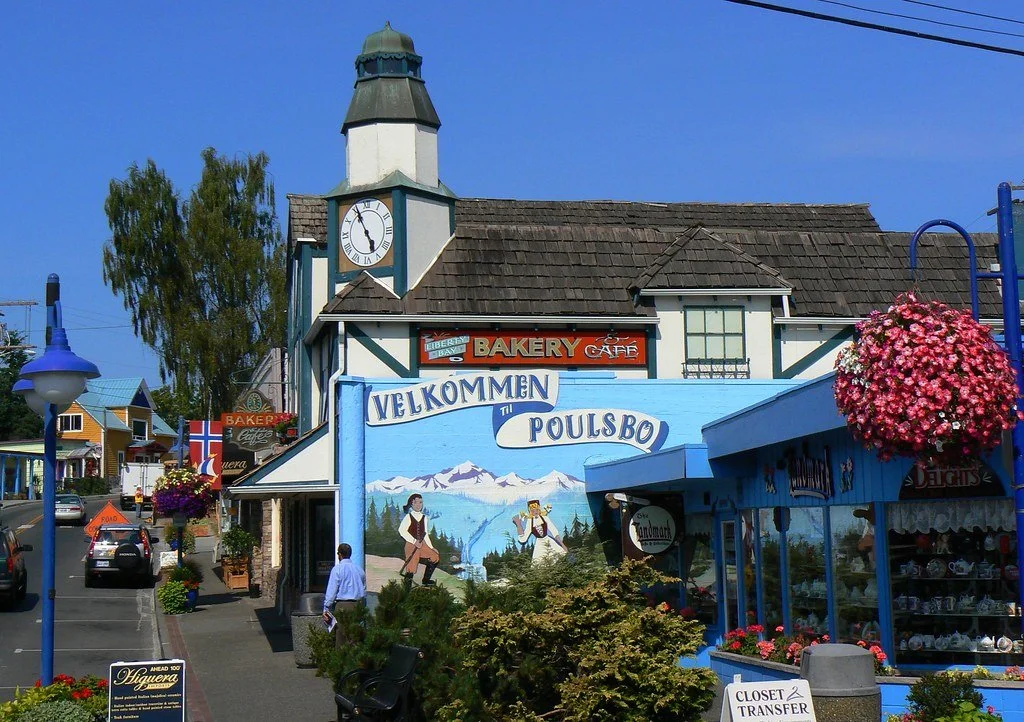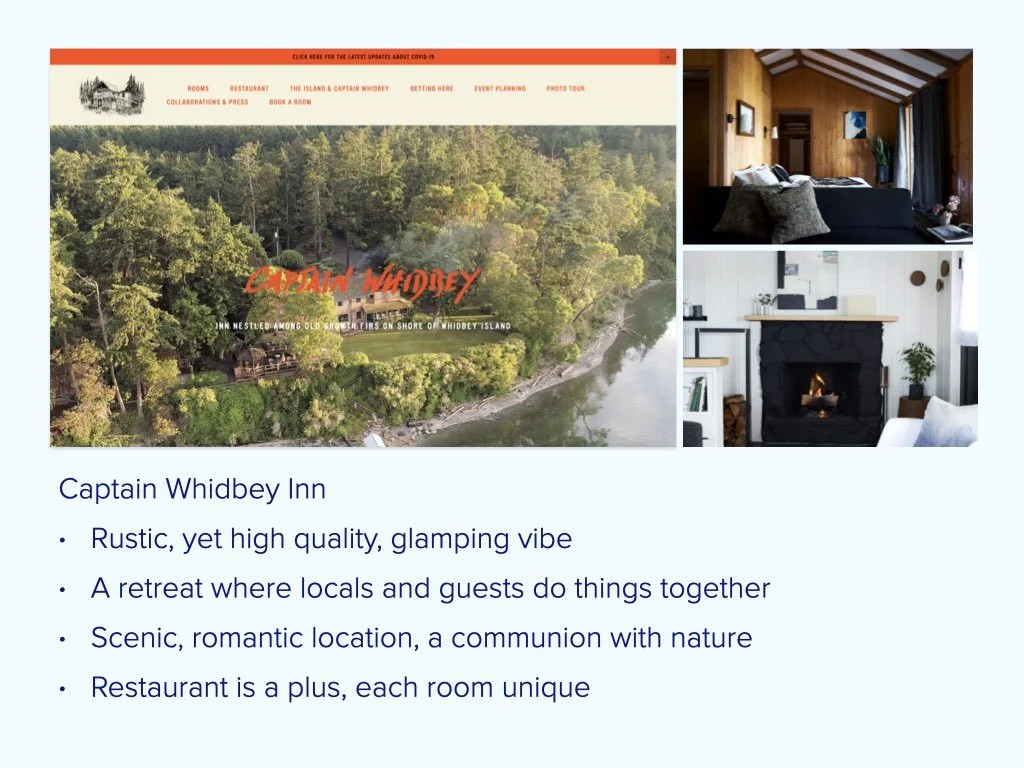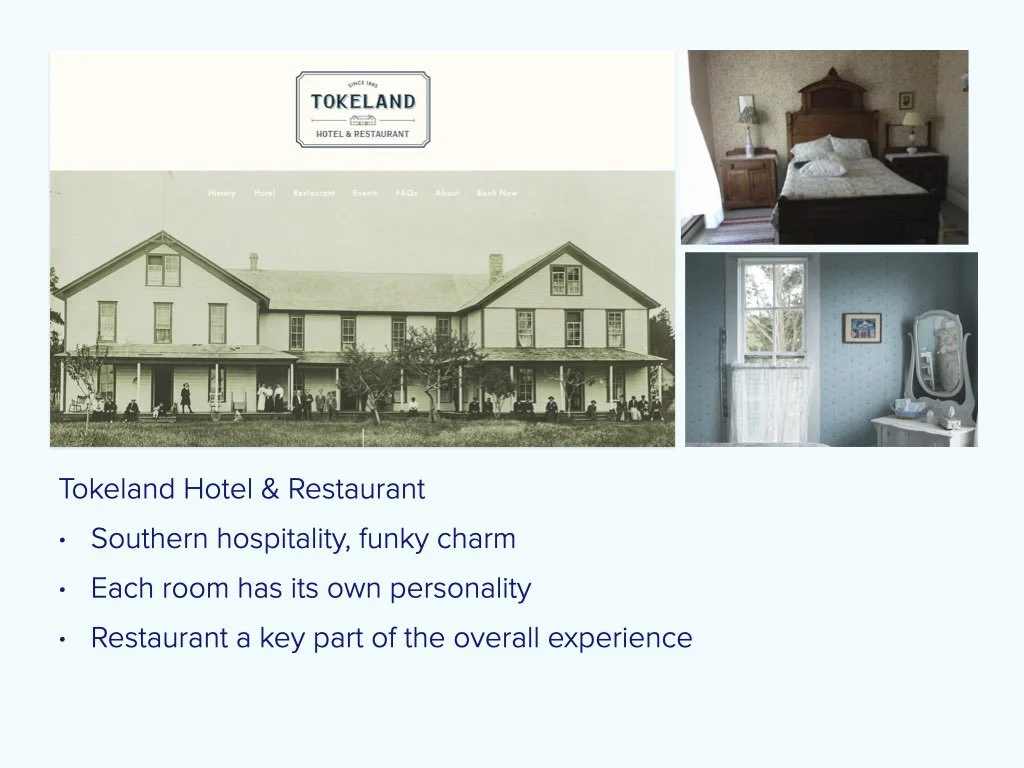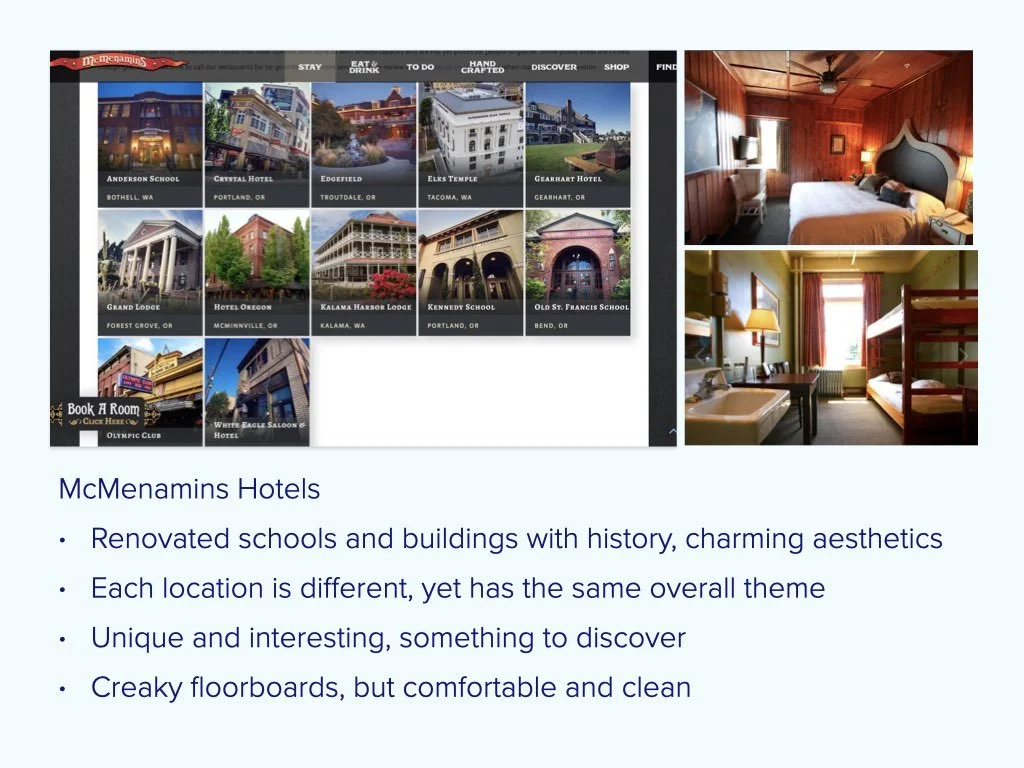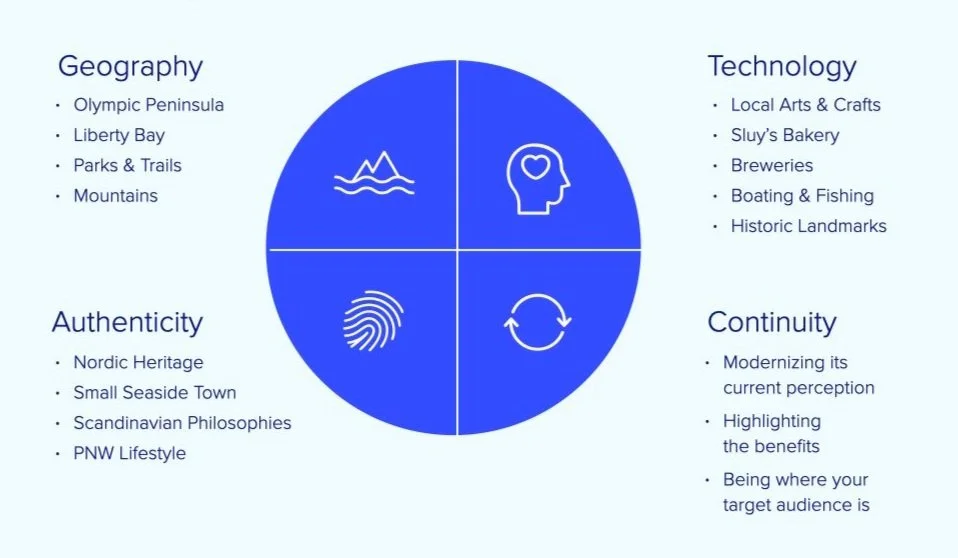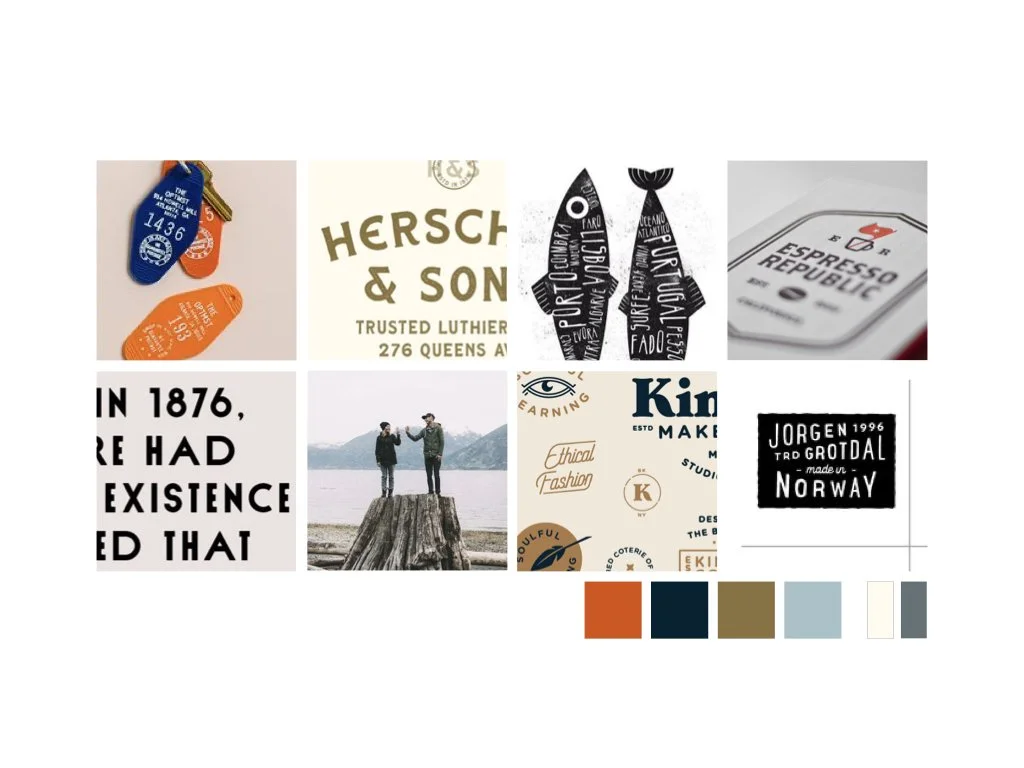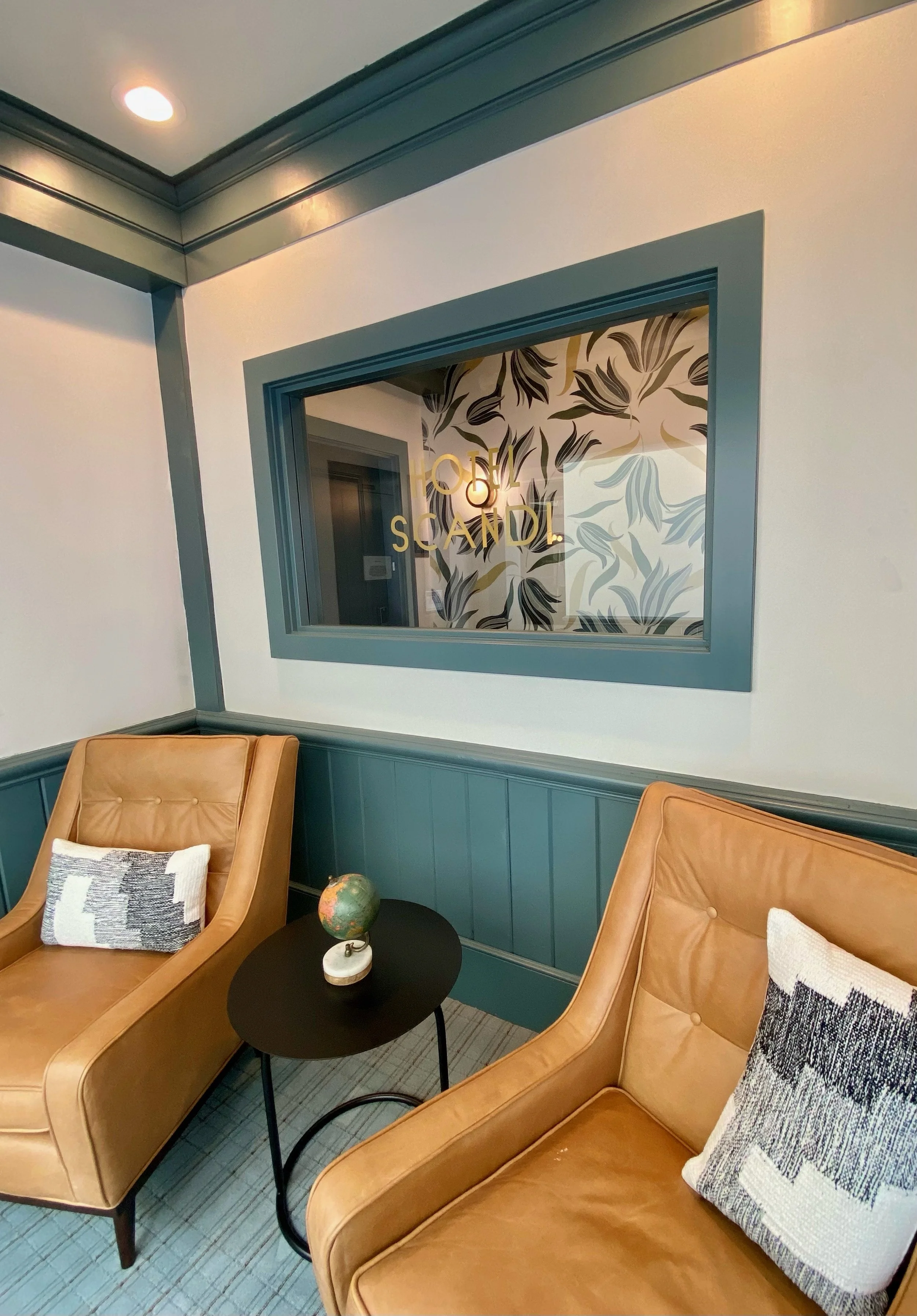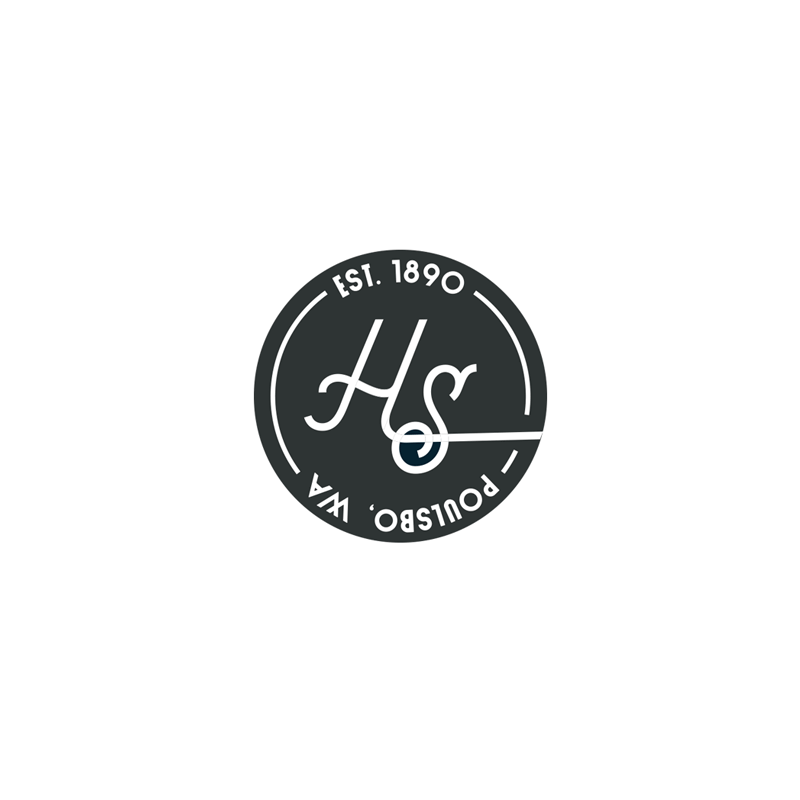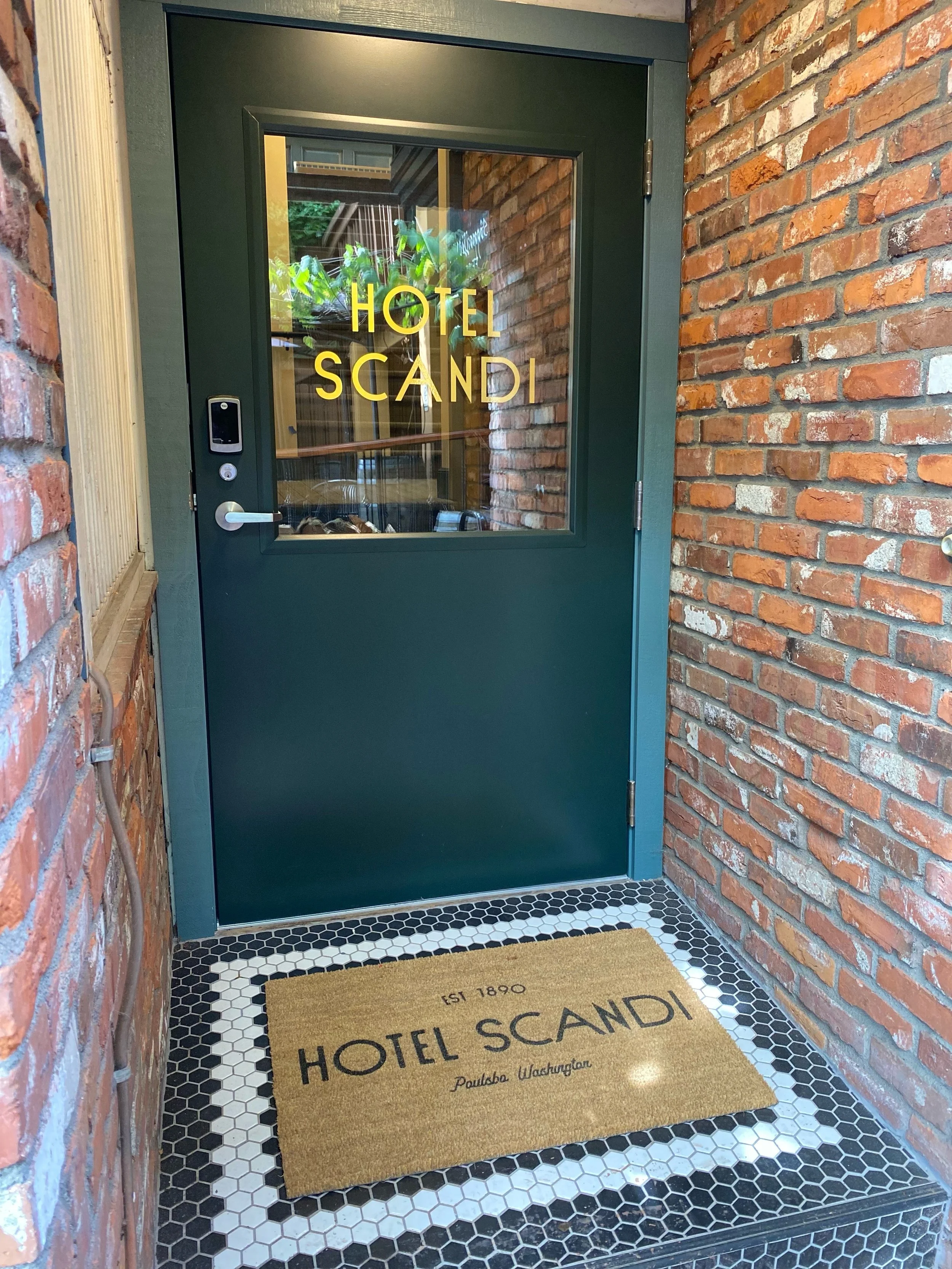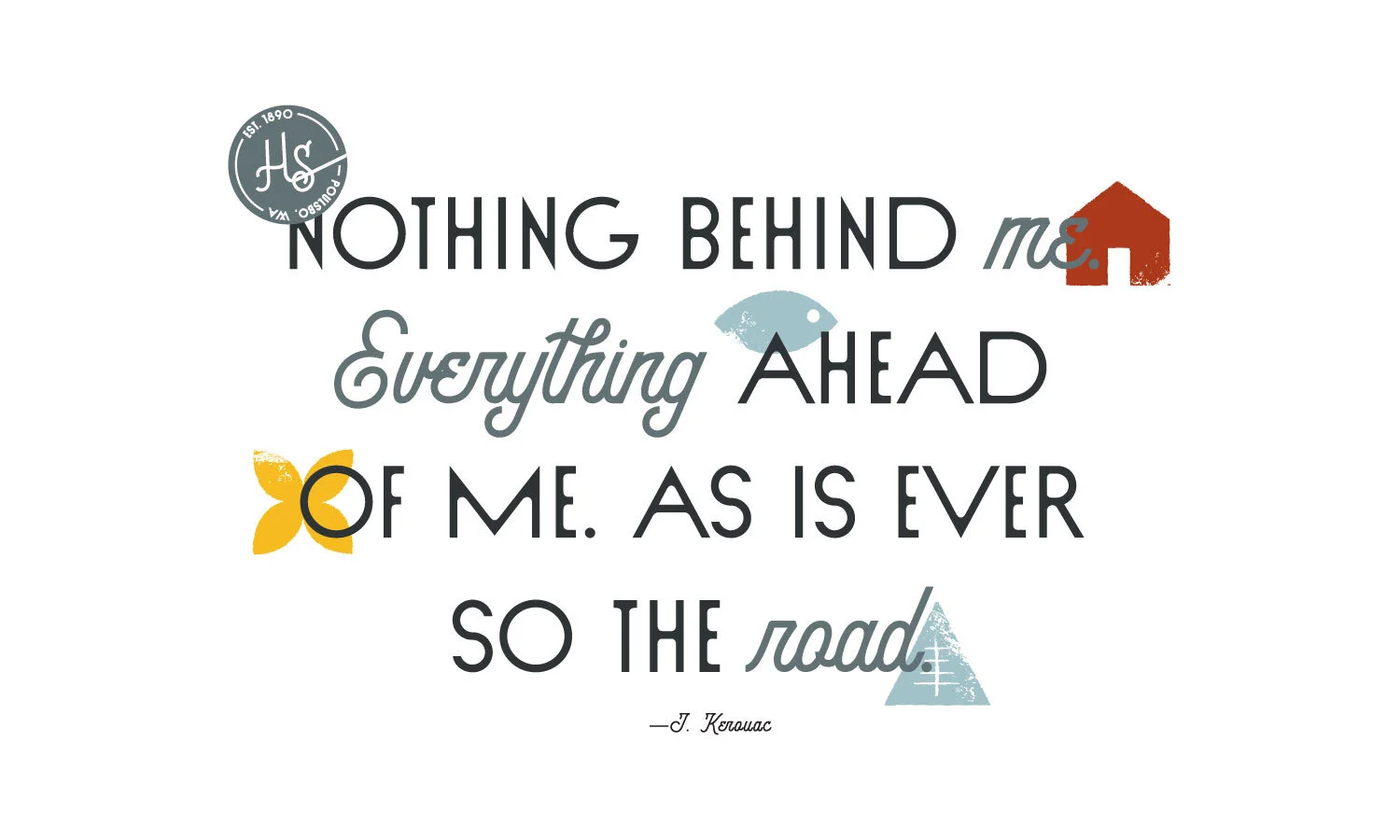
Hotel Scandi
Reimagining hospitality at a charming Pacific Northwest destination.
The Situation
Transforming a town. Sound West Group (SWG) had purchased 11 parcels in the downtown corridor of Poulsbo, WA, one of which is the historic Olympic Inn. With the Olympic Inn property being one of the largest underutilized spaces in Poulsbo, SWG saw an opportunity to use this property as an example of their larger purpose and vision for developing Poulsbo. SWG believes the Olympic Inn property warranted a renovation—a facelift to bring back its historical charm. It was decided to restore the space transforming it into a communal hotel experience.
The Task
The customer experience. The task was to develop a document that articulated the hotel customer experience to local businesses and city officials. It would include market research and insights, target audience profiles, and a brand framework. This work eventually led to an expanded scope which included naming, logo, and a design system.
Discovery
Road mapping. I started by conducting a 90-minute discovery session with 3 SWG stakeholders as a way to hear their stories and learn about their vision, the marketplace, challenges, and opportunities. We also discussed their goals and talked about how best to solve the challenges ahead. The Q&A format kept the session focused yet open for personal expression.
Here is an example of the things we talked about.
“Tell me a fact, and I’ll learn. Tell me the truth, and I’ll believe. But tell me a story and it will live in my heart forever.”
—Indian Proverb
Q: What is the emotional tug that will resonate with your visitors and keep them coming back?
A: Honoring past stories, and creating new ones.
Use the power of storytelling. It's universal and understood by all people, gives meaning, and creates an emotional connection. It drives value — cultural, societal, and economic. Stories build community and allow businesses to contribute to the larger story building local pride creating fans and advocates.
Q: How do we respect Poulsbo’s deep-rooted Nordic ties while making the city relevant to today’s travelers?
A: Embrace “Little Norway” and the commonalities between Scandinavia and Poulsbo.
Mix in Nordic motifs and architectural details (folk and contemporary) that feel fresh and unexpected. Tap into the local sense of pride, and collaborate with businesses and the art community. Find common beliefs and a lifestyle that aligns with both cultures.
ROLE:
Creative Director, Montenegro Design
RESPONSIBILITIES:
Brand Strategy, Naming, Design System
TOOLS:
Adobe CC, Keynote
The rise of the boutique lifestyle experience.
I conducted an audit of 5 hotels/inns around the Pacific Northwest area. I found that lodging uses the descriptors “hotel” and “inn,” though traditionally defined by ownership, size, and service—have recently been re-defined because of the demands of today’s travelers.
Location: Sites to see, local events, dining, shopping
Customer service: Booking policies, accommodations
Local engagement: Authentic, insider experience
Heritage: An origin story creates a more meaningful stay
Convenience: Walkability, mobile communication
Affordability: Low cost over luxury
Sense of discovery: Things are different yet consistent
Photo worthy: A well-designed environment, cool ambiance
TARGET AUDIENCES
I conducted a 1-hour client work session and three interviews with locals to define the demographic and behavioral attributes of the target audiences — The Explorer, The Socialite, and The Adventure Seeker.
It’s more than a place to stay. It’s about creating a story worth telling.
PLACE DNA
The hotel destination story was developed by defining these building blocks. These factors were the framework for naming, voice and tone, and design system.
Geography – This describes the environment, which includes a place’s history, natural surroundings, location, size, landscape, resources, capacity, and more.
Technology – This describes the human impact on a place, which includes factors like its heritage, monuments, buildings, landmarks, planning, infrastructure, and economy.
Authenticity – The traditions, attitudes, cultural contributions, dominant traits, habits, and peculiarities of a group of people who live and interact with one another are all factors that create a sense of place and express that place’s authenticity.
Continuity – This element reflects how a place has combined the three previous traits over time and how that change affects Place DNA®. Places are not reinvented overnight and marketers must respect how their place has been molded over time.
NAMING
From the Olympic Inn to Hotel Scandi. I presented four naming options each that emphasized one of the Place DNA factors above. Ultimately, HOTEL SCANDI was chosen. The chosen name leaned into the Authenticity factor highlighting the town’s Scandinavian heritage and style, yet felt modern and friendly.
MOOD BOARD
Industrial / Rustic / Tactile / Bold
The chosen mood board speaks to the industries of the past:
Inspired by useful artifacts used in the town’s surroundings— nature, fishing village, logging, boating.
Rustic quality harkens back to materials sourced from the fishing and boating industries.
Typography is influenced by industrial signage and practical lodging items
Deep, bold colors are inspired by workwear khaki and safety orange
The Hotel Scandi brand is a blend of Scandinavian and Pacific Northwest cultures.
Here are the common attributes that personify the brand:
Simple—Tactile. Everything has a purpose and a history
Functional—Design-forward. An effortless experience, ease of use
Unplugged—Cool: Fika. coffee break, hip factor, photo-worthy
Warm—Personal. Hygge: the coziness of the soul, affable, harmonious
Witty—Engaging. Lykke: happiness, togetherness, freedom, not so serious
Nature-inspired—Creative. Bringing the outdoors in, craftsmanship, artisans
